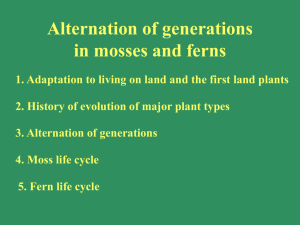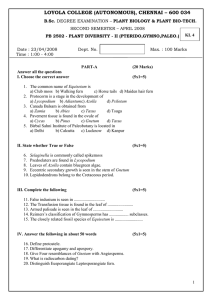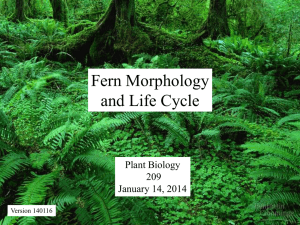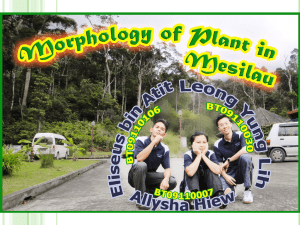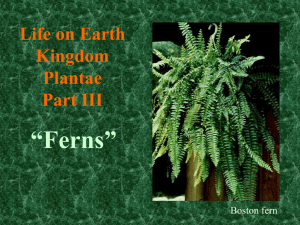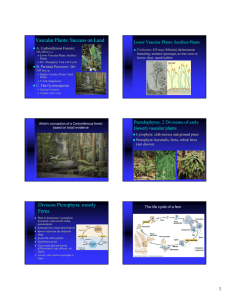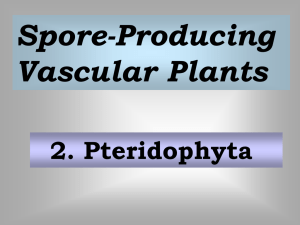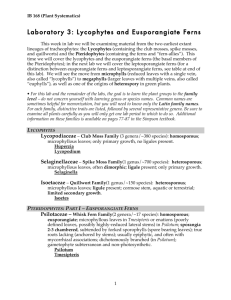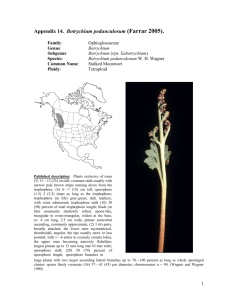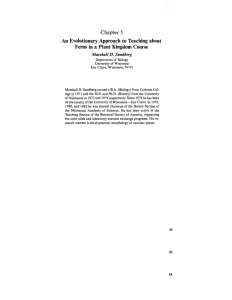Plant Taxonomy Exam #4 Review Sheet Doing taxonomy Producers
advertisement
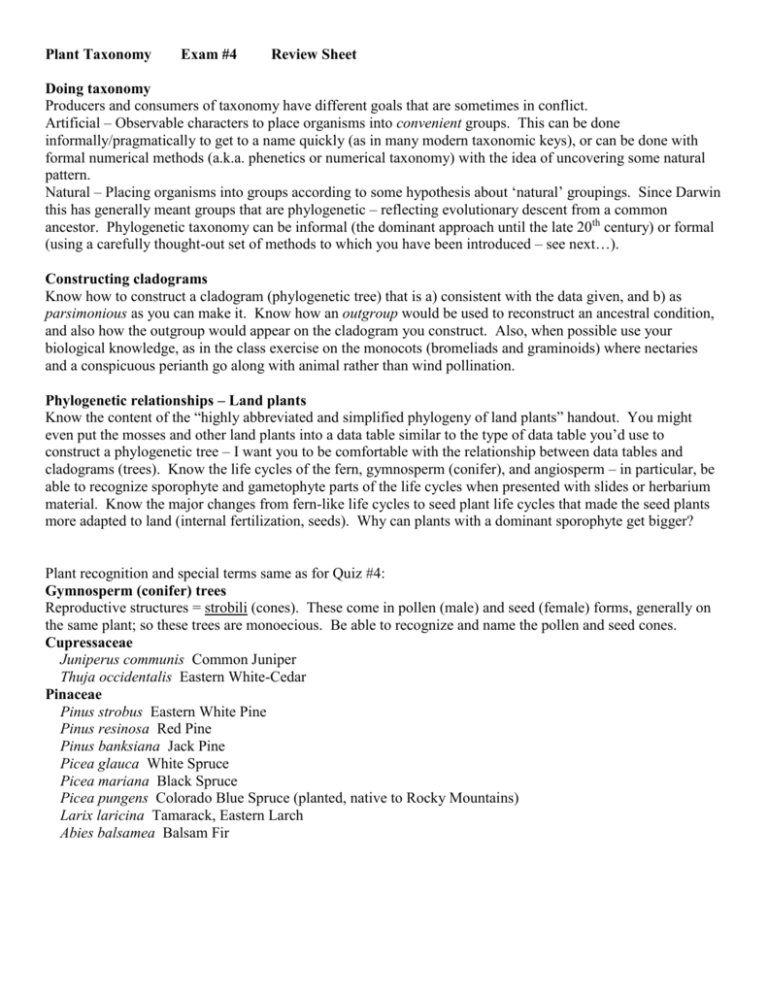
Plant Taxonomy Exam #4 Review Sheet Doing taxonomy Producers and consumers of taxonomy have different goals that are sometimes in conflict. Artificial – Observable characters to place organisms into convenient groups. This can be done informally/pragmatically to get to a name quickly (as in many modern taxonomic keys), or can be done with formal numerical methods (a.k.a. phenetics or numerical taxonomy) with the idea of uncovering some natural pattern. Natural – Placing organisms into groups according to some hypothesis about ‘natural’ groupings. Since Darwin this has generally meant groups that are phylogenetic – reflecting evolutionary descent from a common ancestor. Phylogenetic taxonomy can be informal (the dominant approach until the late 20th century) or formal (using a carefully thought-out set of methods to which you have been introduced – see next…). Constructing cladograms Know how to construct a cladogram (phylogenetic tree) that is a) consistent with the data given, and b) as parsimonious as you can make it. Know how an outgroup would be used to reconstruct an ancestral condition, and also how the outgroup would appear on the cladogram you construct. Also, when possible use your biological knowledge, as in the class exercise on the monocots (bromeliads and graminoids) where nectaries and a conspicuous perianth go along with animal rather than wind pollination. Phylogenetic relationships – Land plants Know the content of the “highly abbreviated and simplified phylogeny of land plants” handout. You might even put the mosses and other land plants into a data table similar to the type of data table you’d use to construct a phylogenetic tree – I want you to be comfortable with the relationship between data tables and cladograms (trees). Know the life cycles of the fern, gymnosperm (conifer), and angiosperm – in particular, be able to recognize sporophyte and gametophyte parts of the life cycles when presented with slides or herbarium material. Know the major changes from fern-like life cycles to seed plant life cycles that made the seed plants more adapted to land (internal fertilization, seeds). Why can plants with a dominant sporophyte get bigger? Plant recognition and special terms same as for Quiz #4: Gymnosperm (conifer) trees Reproductive structures = strobili (cones). These come in pollen (male) and seed (female) forms, generally on the same plant; so these trees are monoecious. Be able to recognize and name the pollen and seed cones. Cupressaceae Juniperus communis Common Juniper Thuja occidentalis Eastern White-Cedar Pinaceae Pinus strobus Eastern White Pine Pinus resinosa Red Pine Pinus banksiana Jack Pine Picea glauca White Spruce Picea mariana Black Spruce Picea pungens Colorado Blue Spruce (planted, native to Rocky Mountains) Larix laricina Tamarack, Eastern Larch Abies balsamea Balsam Fir Non-seed vascular plants Reproduce by spores, not seeds. Lycophytes (club mosses) Reproduce with spores which develop in sporangia. Sporangia either on strobili (cone-like structures), or in leaf axils. Dendrolycopodium obscurum Ground pine, Princess pine (=Lycopodium obscurum) Diphasiastrum complanatum Ground cedar (=Lycopodium complanatum) Lycopodium clavatum Running ground pine Ophioglossaceae (Adder's Tongue Ferns) Aboveground shoot (when present – many of these can persist underground for years) has a vegetative (photosynthetic) branch, and a spore-bearing branch (sporophore) which bears sporangia. Botrychium virginianum Rattlesnake fern Botrychium sp. Botrychium ferns Equisetophytes (horsetails) Sporangia in strobili at the end of fertile stems, stems may be fertile (terminating in a strobilus) or infertile. Equisetum arvense Equisetum hyemale Equisetum sylvaticum Leptosporangiate ferns (“True ferns”) Have distinctive stalked sporangia that spring open when spores are ready. Sporangia may be grouped into sori (sing. sorus) which may or may not have an umbrella-like indusium. Aboveground stem/leaf is a frond, consisting of a blade (flat leafy part) on a stipe (stem/petiole-like part). Blade often pinnately divided; individual divisions called pinnae. Fertile (sporangia-bearing) and sterile fronds may differ strongly or not. Athyrium filix-femina Lady fern Dryopteris cristata Crested wood fern Matteuccia struthiopteris Ostrich fern Onoclea sensibilis Sensitive fern Osmunda claytoniana Interrupted fern Pteridium aquilinum Bracken fern
